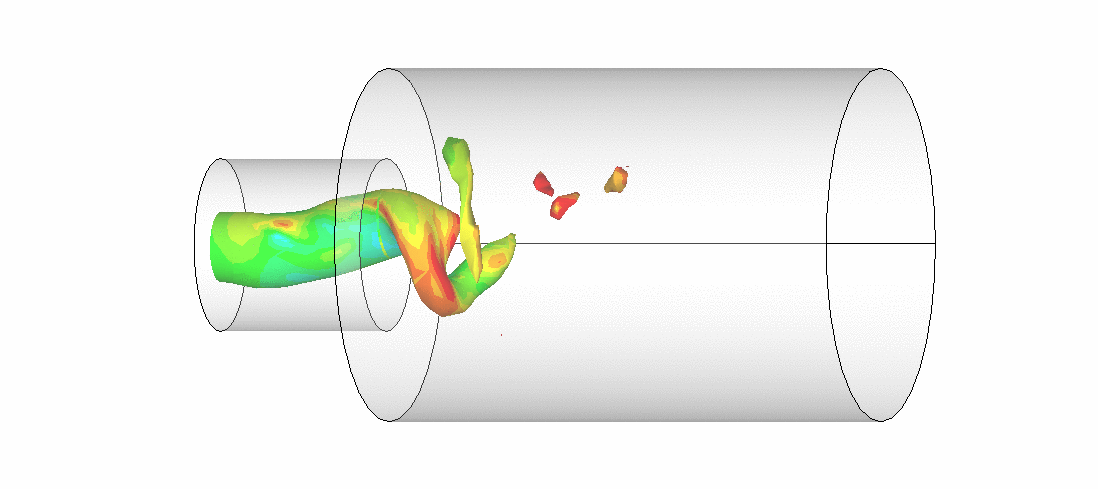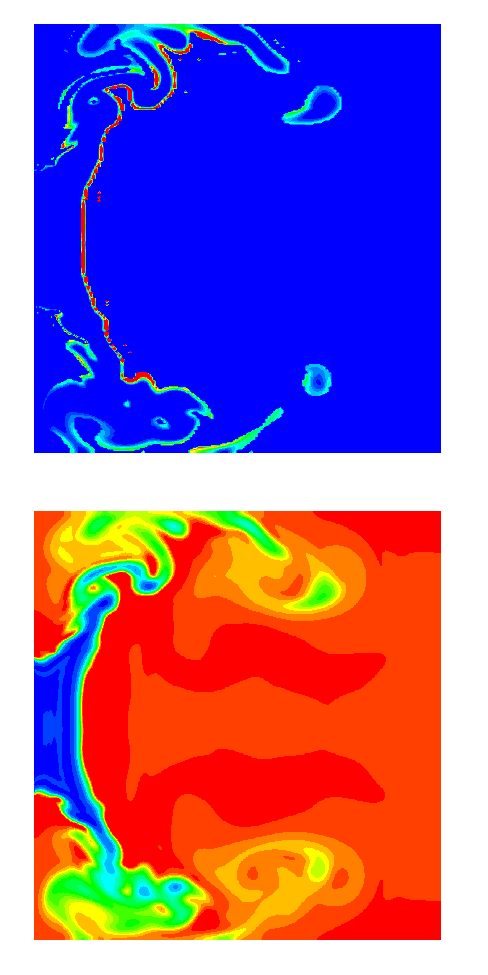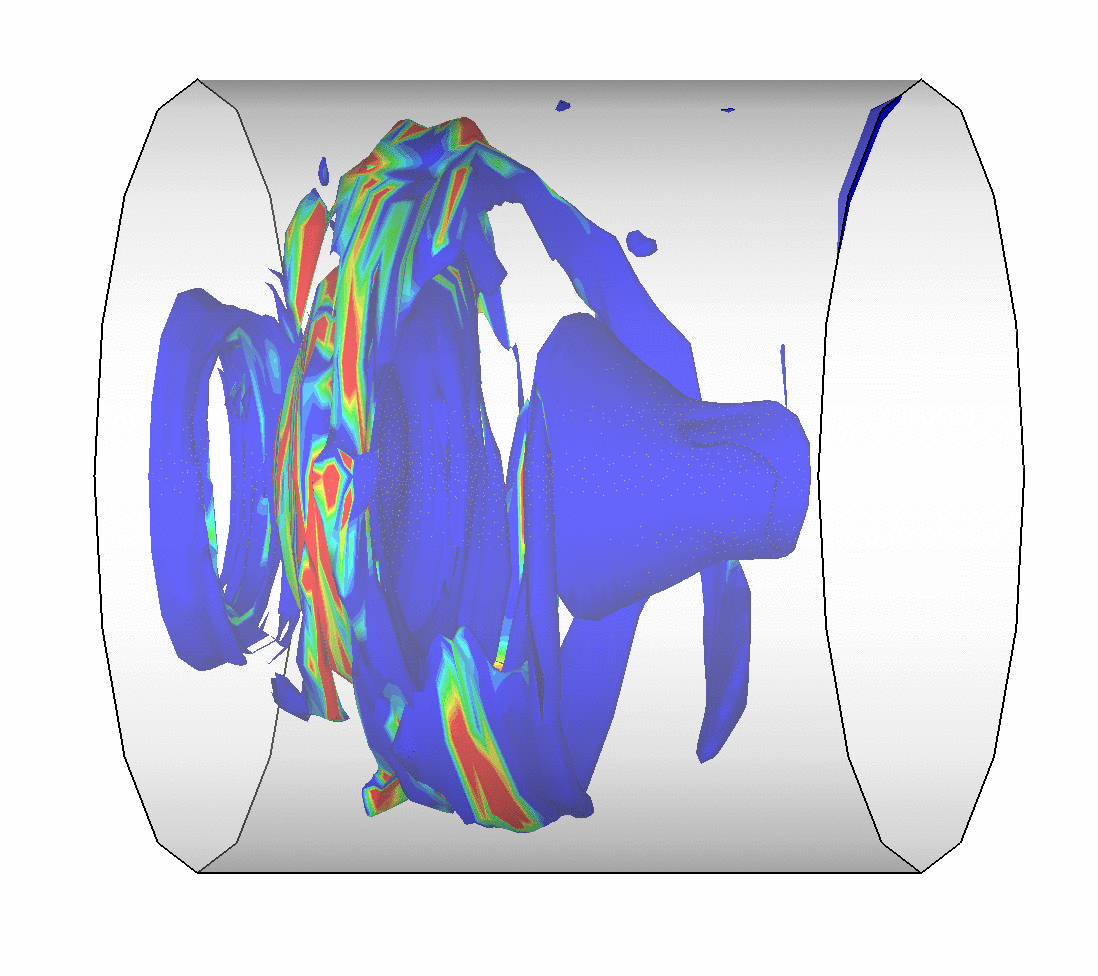Low emission gas turbine combustors often employ lean premixed flames instead of diffusion flames for better temperature and pollution control. However, lean premixed flames are highly susceptible to combustion instabilities which are detrimental to the combustors, reducing their life span. Swirl is often employed to enhance mixing and stabilize these flames. Combustion noise plays an important role in combustion instability, which involves coupling between duct acoustic modes and the unsteady heat release in the combustor. These acoustic modes have their origin in turbulent flames itself. The focus of our research is on the better understanding of the flame acoustics, initiation of combustion instabilities and its control.
Numerics with low dissipation and dispersion characteristics along with charcteristic based boundary conditions are necessary in order to study the aeroacoustics of the flow. A combination of fifth-order compact upwind schemes and sixth-order ompact central schemes are used to solve the Favre-filtered compressible Navier-Stokes equations using LES. Fourth-order Runge-Kutta method is used for time integration. Fifth-order WENO(weighted essentially non-oscillatory) scheme is used for species convection term. DSM (dynamic Smagorinsky model) and thickened flame model are used for the closure of turbulence and combustion respectively. Combustion is modeled assuming one-step chemistry.Our code has been validated for non-reacting non-swirling, reacting non-swirling and non-reacting swirling cases. Furture work focuses on the aeroacoustics of swirl combustors and possible means of controlling combustion instabilities.
 The above figure shows the isosurface of pressure for a non-reacting, strongly swirling flow (swirl ratio = 0.6) in a dump combustor. For high swirl, the vortex starts precessing around the axis of the combustor and this is called the precessing vortex core(PVC). PVC is found to generate instabilites in spite of the findings by some studies which show that PVC is damped in the presence of combustion (Note: only part of the combustor in axial direction is shown for clarity).
The above figure shows the isosurface of pressure for a non-reacting, strongly swirling flow (swirl ratio = 0.6) in a dump combustor. For high swirl, the vortex starts precessing around the axis of the combustor and this is called the precessing vortex core(PVC). PVC is found to generate instabilites in spite of the findings by some studies which show that PVC is damped in the presence of combustion (Note: only part of the combustor in axial direction is shown for clarity).

